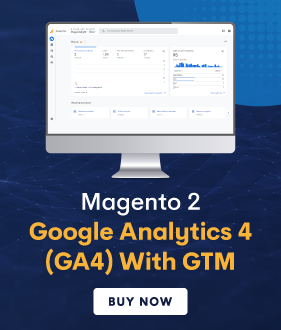Headless Commerce has already become mainstream in the eCommerce industry.
Headless commerce basically refers to the practice of separating an eCommerce store from its backend via APIs and/or microservices.
Put another way, headless commerce is about separating what store visitors see from eCommerce store databases.
By adopting headless, eCommerce companies can make sure that their investment in their online stores isn’t necessarily tied to their chosen eCommerce platforms.
This, in turn, provided eCommerce companies with the freedom to upgrade their online stores without the need to rewrite their entire eCommerce stores.
In fact, all top U.S. eCommerce companies like Amazon, Nike, Target, Walmart, etc., have gone headless. And the rest are already either in the process of adapting headless or began considering it.
Headless commerce picked up a notable pace when Progressive Web Apps (PWAs) technology became mainstream in 2018, which happened because PWAs provided the most significant revenue lift as well as a cheaper way to deliver eCommerce stores.
Today, PWAs are considered as a perfect approach to develop a modern & headless eCommerce website with three unmatchable benefits:
- Freedom from being tied to eCommerce platforms
- Increased sales revenue via a fast, app-like eCommerce store experience
- Elimination of the cost to build & maintain native mobile apps
In fact, these 3 benefits are actually the main 3 reasons why you should too focus on headless commerce in 2022.
But if you’re not convinced yet, read on to understand these reasons in detail.
1 – Headless Commerce Helps to Provide App-Like Shopping Experience on Web
PWAs, in case you didn’t know, is nothing but app-like websites that combined the best features of both websites and native mobile apps, which provided extremely fast loading speed, one-tap checkout, and instant login.
In fact, when PWAs are combined with other modern technologies such as server-side rendering, accelerated mobile pages (AMPs), etc., eCommerce companies can deliver extraordinary customer service & exceptionally fast loading websites.
In simple words, when you correctly combine PWA with server-side rendering, it could deliver eCommerce stores that load in a blink of an eye, from web search to the checkout page, removing all frictions from customers’ journey to purchase.
When Venus Fashion, for example, went headless and reduced their mobile page load speed to 320 milliseconds, they witnessed a dramatic 24% rise in the conversion rate.
But if even this doesn’t sound interesting enough, you’d be surprised to know that the cost to build eCommerce PWA is much lower compared to other modern technologies such as React, Node.js, AWS, and AMP tools.
2 – Headless Commerce Helps to Make Your Proprietary Store Portable Across eCommerce Platforms
Most of the famous eCommerce platforms including Magento, Shopify Plus, Salesforce, Oracle Commerce Cloud, and others were developed with a backend & data-first approach, not a customer-first approach.
These famous platforms focus on taxonomy, product SKUs, promotions, pricing, and purchasing. And while these are all important features to focus on, the main and the most important trade-off is customer experience.
Fortunately, because of the arrival of portable technologies like PWA, AMP, and Server-Side Rendering, it is now possible to provide an extremely fast & frictionless customer experience on top of these famous eCommerce platforms.
Walmart, for instance, was one of the first eCommerce giants to go headless by adopting Node.js and other portable technologies. The company, with the help of these technologies, decoupled its eCommerce store from its monolithic eCommerce platform – Oracle ATG – and built an app-like website on microservice architecture.
Today, Walmart’s eCommerce revenue growth continues to outpace most average retailers in the industry.
3 – Headless Commerce Helps to Eliminate the Need for Native Apps
Native mobile apps are both costly to build and even more expensive to maintain. But more importantly, they generate only a fraction of the revenue for businesses.
Moreover, consumers nowadays don’t like to add new brand icons to their phone screens. In fact, a 2018 survey also revealed that consumers now spend 90% of their time on just the top five apps.
But, if you build an eCommerce PWA, they’re not just cheap to develop & launch, they’re also the most successful in recent years.
1-800-flowers.com, for example, only took 1 day to upload their PWA to Google Play Store, the new app generated a whopping 30% increase in overall conversions compared to their previous Java-developed Native Android app.
Thanks to this, the 1-800-flowers.com stock also reached new heights for the first in a long while.
The point is, by going headless with new, portable technologies like AMP, Server-Side Rendering, and especially Magento PWA Development, you can most certainly bring your eCommerce business to the next level & enjoy more sales as well as revenues.
Final Thoughts…
The future of eCommerce is unquestionably headless. And eCommerce companies that have adopted headless commerce have already gained a competitive advantage.
Specifically, they have been rewarded with enhanced engagement, new customers, and more conversions, not to mention better SEO performance in search engines.
The point is, if you’re wondering how to expand your eCommerce business or grow your eCommerce revenue, Headless Commerce is definitely the best way to go about it!
That being said, if you still have any doubts or need professional assistance with Headless PWA development, feel free to reach out to us at any time for help.

